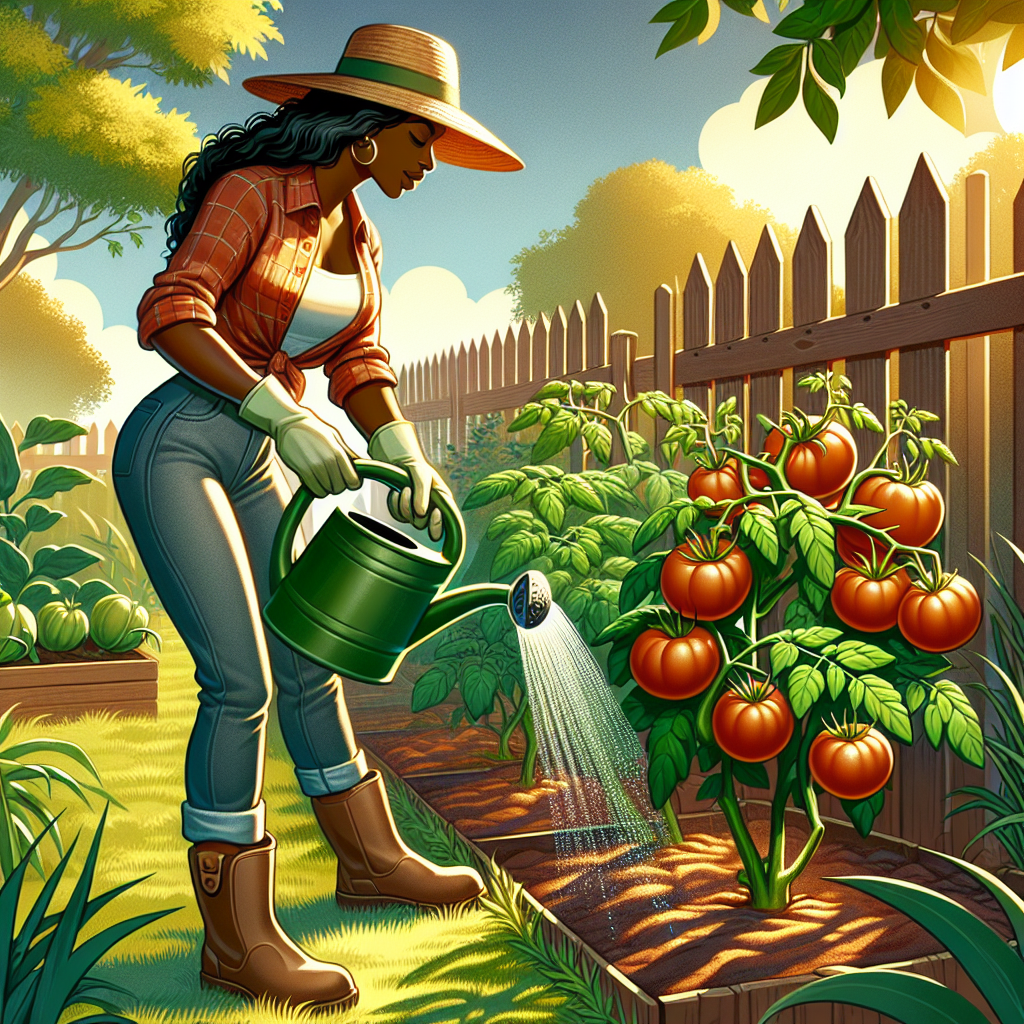
How to water tomato
How to Properly Water Your Tomato Plants for Maximum Yield
When it comes to gardening, particularly growing tomatoes, watering practices can greatly affect your crop's productivity and overall health. Understanding the best methods for irrigation can lead to bountiful harvests, while improper watering can result in stunted growth or disease. In this article, we’ll explore effective techniques and tips on how to water your tomatoes to help you achieve a thriving garden.
Understanding Your Tomato Plants’ Needs
Tomato plants have specific requirements when it comes to moisture. They thrive in well-drained soil and prefer consistent watering, with their roots extending deep into the ground in search of nutrients and moisture. Here are key factors that influence their water needs:
- Soil Composition: Well-draining soil is crucial for tomato plants, as overly saturated soil can lead to root rot.
- Weather Conditions: Hot, sunny days increase evaporation rates, thereby requiring more water.
- Growth Stage: Young seedlings require less water compared to mature plants that are bearing fruit.
- Container vs. In-Ground Plants: Container plants may dry out faster than those grown directly in the soil.
Signs Your Tomato Plants Need Water
It’s essential to recognize when your tomato plants require watering. Here are some common signs:
- Wilting leaves
- Dark green foliage turning lighter
- Fruit cracking or blossom end rot
- Dry soil at the base of the plant
Best Practices for Watering Tomatoes
Now that you understand the needs and signs indicating your tomato plants require water, let's dive into some best practices for proper irrigation.
Watering Techniques
The method of watering can significantly impact the health of your tomato plants. Here are some recommended techniques:
- Deep Watering: This method encourages deep rooting and ensures that the water reaches the roots instead of just wetting the topsoil.
- Soaker Hoses or Drip Irrigation: These systems deliver water directly to the soil, reducing evaporation and minimizing wetting of foliage, which can prevent diseases.
- Hand Watering: For smaller gardens or containers, hand watering using a watering can or hose can be effective, but ensure water penetrates deeply into the soil.
Watering Frequency
Determining how often to water your tomato plants can depend on various factors such as weather, soil type, and plant maturity. Here are some guidelines:
- During hot, dry spells, tomatoes may need watering every day or every other day.
- In cooler, wetter conditions, once or twice a week may suffice.
- Always check the top inch of the soil; if it feels dry, it’s time to water.
Time of Day for Watering
The timing of your watering can also play a role in plant health. The best times to water are:
- Early Morning: Watering early helps reduce evaporation losses and allows plants to absorb moisture before the heat of the day.
- Late Afternoon: If you miss the morning window, late afternoon is another good choice but avoid watering too late to prevent evening dampness.
Special Considerations for Watering Tomatoes
While watering your tomatoes, keep these special considerations in mind to promote optimal growth and prevent issues:
Mulching
Applying mulch around your tomato plants can help retain moisture in the soil, reduce weeds, and maintain a more consistent temperature. Consider the following types of mulch:
- Organic materials like straw, wood chips, or grass clippings.
- Inorganic options include landscape fabric or black plastic.
Water Quality
Ensure that the water you use for your tomato plants is free from contaminants. Ideally, use:
- Tap water that has been allowed to sit for 24 hours to dissipate chlorine.
- Rainwater, which is often the best option for your plants.
Adjusting for Specific Tomato Varieties
Different varieties of tomatoes may have unique watering requirements. Consider grouping your plants based on their specific needs or growth habits. For example:
- Determinate tomatoes often require less water compared to indeterminate varieties since they grow to a specific height and set fruit all at once.
- Heirloom varieties may have different drought tolerances compared to modern hybrids.
Avoiding Common Watering Mistakes
To keep your tomato plants healthy, be cautious of these common watering mistakes:
- Overwatering: This is perhaps the most detrimental practice, leading to root rot and other diseases.
- Watering leaves instead of soil: Wet foliage increases the risk of fungal infections.
- Inconsistent watering: Fluctuating moisture levels can cause blossom drop and affect fruit set.
Dealing with Challenges
Sometimes, despite our best efforts, we may encounter watering-related issues. Here are some common challenges and solutions:
| Challenge | Solution |
|---|---|
| Overwatering Symptoms | Avoid watering for a few days and check the moisture level; improve drainage if necessary. |
| Underwatering Symptoms | Increase the frequency of watering and apply mulch to retain moisture. |
| Blossom End Rot | Ensure consistent moisture levels and provide calcium fertilizer if needed. |
Conclusion
Learning how to water tomato plants effectively is key to achieving rich, flavorful fruits and a flourishing garden. By following best practices, adjusting watering schedules based on weather conditions, and being mindful of the unique needs of your plants, you can ensure that your tomato harvests are abundant and healthy. Whether you are a seasoned gardener or a beginner, implementing these strategies will help you master the art of tomato cultivation!
By Guest, Published on August 12th, 2024